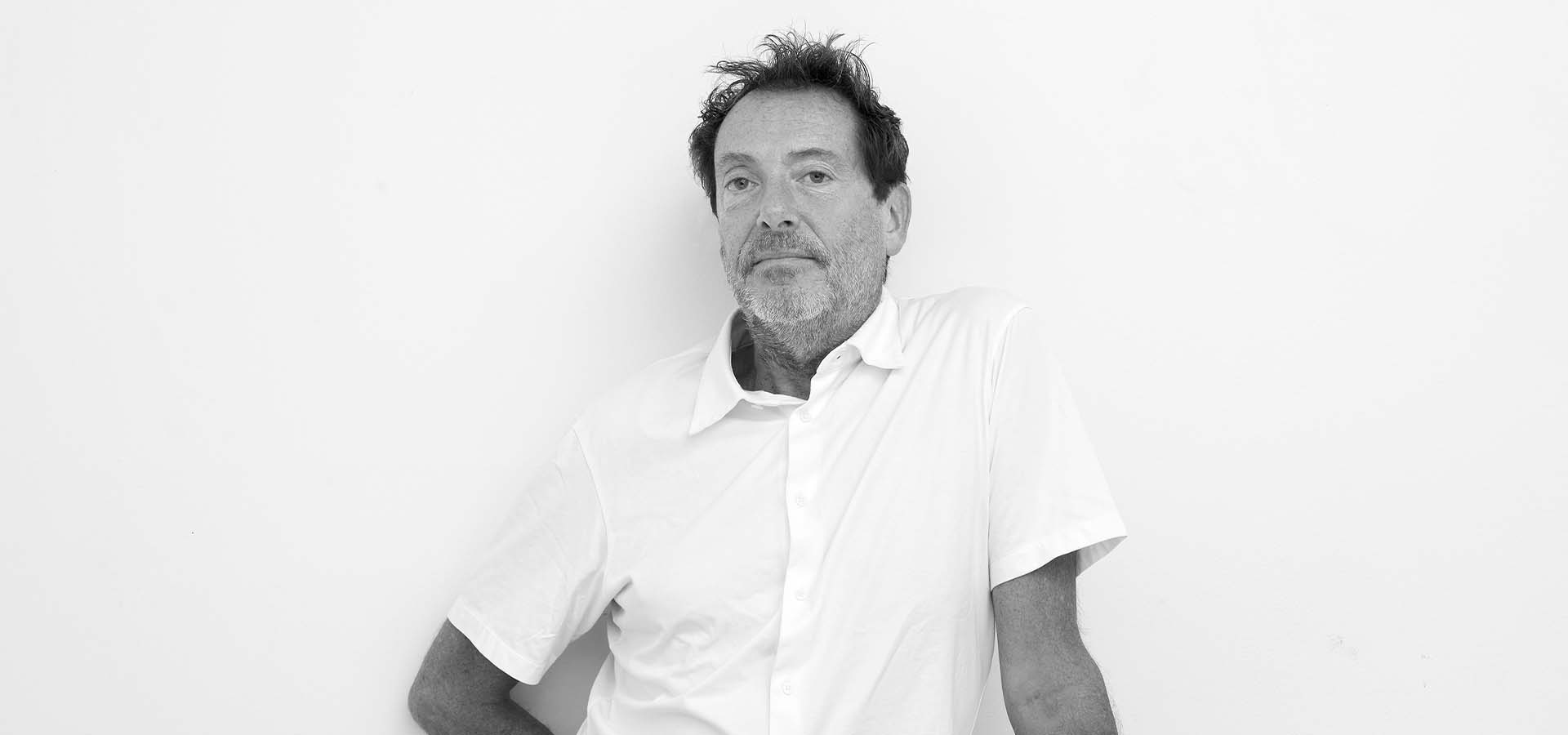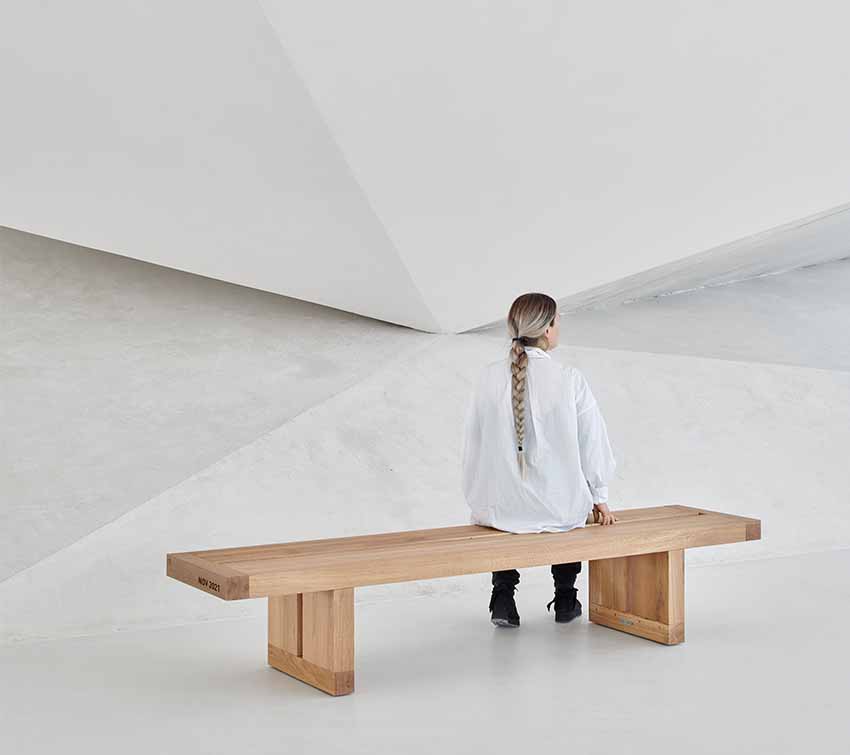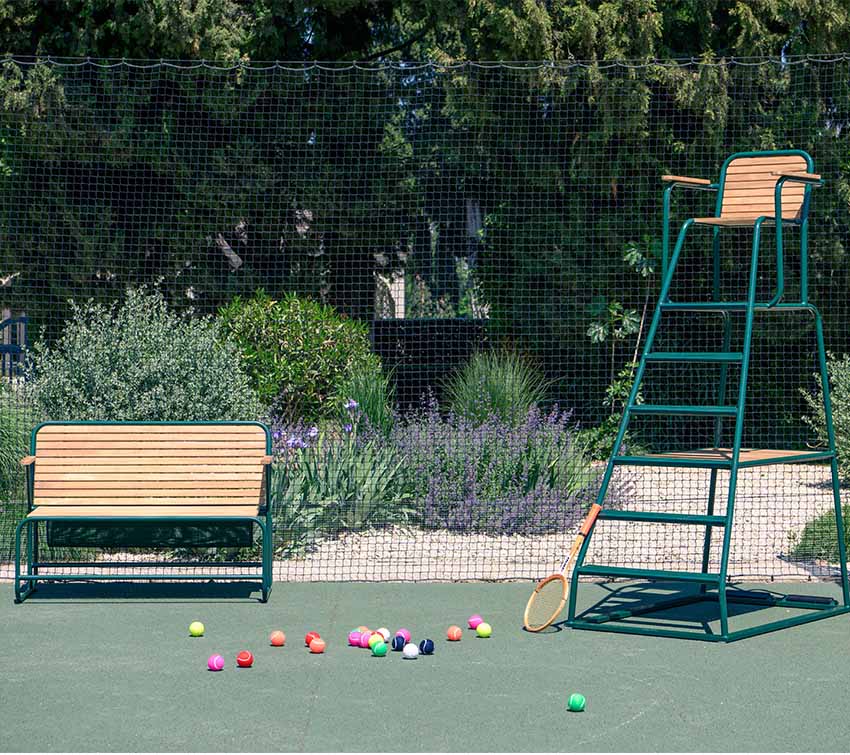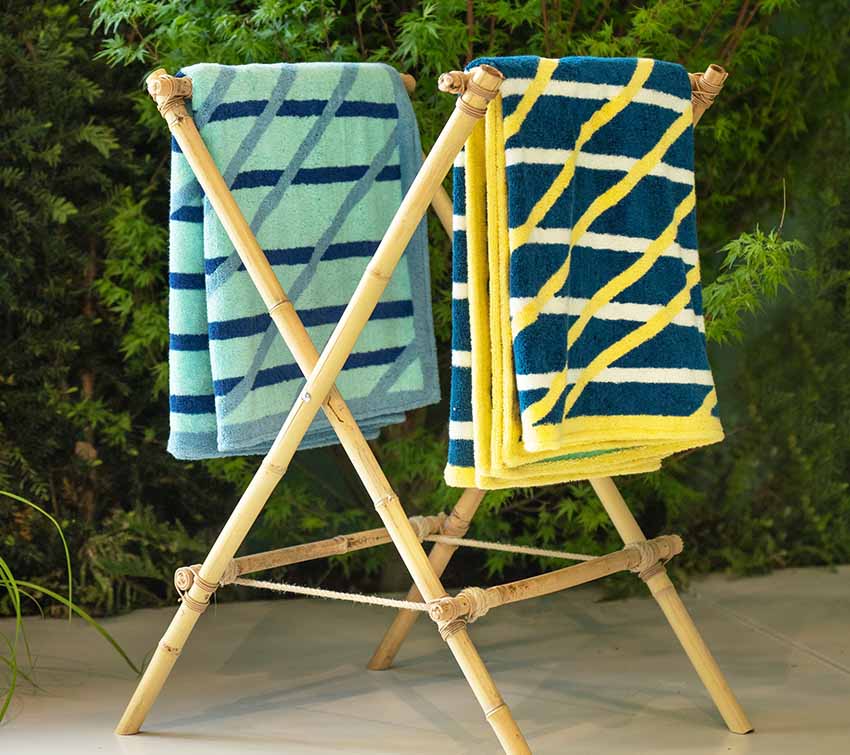
Pierre Charpin and creation
Designer and visual artist Pierre Charpin has been collaborating with Tectona for nearly two decades. His agenda this spring 2024 includes, among other things, the scenography of an exhibition dedicated to the Italian maestro Alessandro Mendini (1931-2019), entitled Io Sono Un Drago [I am a dragon] and present at the Milan Triennale from 13 April to 13 October. Pierre Charpin has chosen three projects that provide a glimpse into his creative process.

The poetry of rail lines
A simple form without digressions, devoid of superfluous details. This bench, designed for two flagship institutions of Lausanne —the Museum of Contemporary Design and Applied Arts, and Photo Élysée— that were united in the same building in 2022, explicitly expresses what the object is: its function, its construction, its material. Pierre Charpin drew inspiration from “the sleepers of railway lines that evoke the history of this place, situated right next to the central railway station, on the site of the former locomotive hangar” and from the work of the minimalist American artist Carl André, a master of raw materials and simple forms in whom he declares “an unwavering interest”. His goal: propose an object of obvious simplicity, an object that affirms its presence while remaining discreet. “A museum bench must not under any circumstances grab your attention, hence the lack of a backrest,” underlines Pierre Charpin.
“Working with large sections allowed us to give a certain ‘weight’ to the object, and not only from an aesthetic point of view.” The bench combines a single material, oak, with elemental geometry: two sleepers held in place at their ends by a junction piece. “Like the museum, railway tracks symbolise, among other things, the possibility of discovering and connecting with other worlds, other horizons,” Charpin adds.

Celebtraing the archetype
Do not reinvent everything — on the contrary, sublimate the qualities of an object that has demonstrated its worth for nearly a century. This was one of the starting points for the reflection around the “renewal of the umpire’s chair”, a commission to Tectona by Jean-Claude Blanc, a connoisseur of design and the then DirectorGeneral of the French Tennis Federation with responsibility for organising the French Open tournament. “My design was not conjured up out of thin air,” relates Pierre Charpin. “It adopts, with more sobriety, the original dimensions of the popular and archetypal model dating from the 1920s. The angle of inclination of the steps, for example, is designed so that, in the event of a disputed point, umpires can rapidly descend without taking their eyes off the ball’s mark on the court, then climb back up with the same rapidity.”
The elegant new umpire’s chair, combining teak slats with powder-coated aluminium tubing, was intended for the main courts of Roland Garros stadium such as the Philippe-Chatrier and Suzanne-Lenglen courts; this plan didn’t come to fruition after the departure of Blanc. All was not lost however: after being stripped of “official” accessories —microphone, score-keeping computer, advertising spaces—, the chair entered the Tectona catalogue in 2007. The late designer Karl Lagerfeld, an avid bibliophile, repurposed the chair to make a… bookcase ladder!

Design times
For Pierre Charpin, design is not an ancillary activity but a discipline in its own right. In 2022, visitors attending his monographic exhibition at the Hôtel des Arts de Toulon, could admire for themselves the virtuosity he has attained in a diverse range of techniques: graphite, coloured pencils, crayons, chalk, felt-tip pen, ink, paint… For Charpin, the purpose of design is not to formalise; it simply is. “I have to feel the need for tension, which does not rule out pleasure, for the design to come into being,” he says. Design is an integral component of every one of his projects. At his workshop, in Ivry-sur-Seine in the southeastern suburbs of Paris, hangs an engraving of his father, the artist Marc Charpin, who he himself was initiated into this technique in the 1950s by the sculptor and engraver Henri-Georges Adam: “The lines and the hatching, I can always see them,” confides Pierre Charpin. “They are omnipresent for me.”
In one of his current projects, with beach towels, he is playing around with colours and motifs; specifically, a solid background on which are drawn two layers of lines: one with gently waving lines spread across the longest side, the other with curvy lines with bold diagonal slanting. We eagerly await the outcome…
